As ISH is held this week in Frankfurt, it’s important to consider its main tenet – the idea of a Sustainable Bathroom.
The Sustainable Bathroom is present in the Water section in the form of products, panel discussions and targeted approaches, and defining new standards. Sustainability is an important issue and resource conservation is the order of the day – including and especially in the bathroom, where one third of a household’s daily drinking water consumption is used for showering, bathing and personal care and hygiene. Another quarter ends up in the sewage system as a result of flushing the toilet.
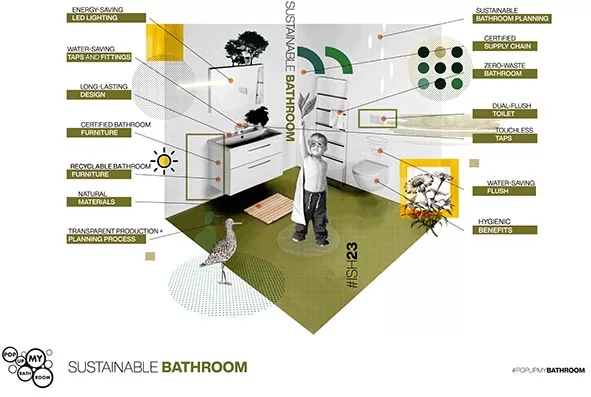 Being mindful of how we use water is the easiest way to behave sustainably in the bathroom. Because it’s not purely how much water we use that matters: heating it takes a lot of energy, and that has a noticeable impact on both the costs and the ecological footprint of every single household. The German bathroom sector is constantly looking for ways to save water – whether it’s at the washbasin, in the shower or use of the toilet.
Being mindful of how we use water is the easiest way to behave sustainably in the bathroom. Because it’s not purely how much water we use that matters: heating it takes a lot of energy, and that has a noticeable impact on both the costs and the ecological footprint of every single household. The German bathroom sector is constantly looking for ways to save water – whether it’s at the washbasin, in the shower or use of the toilet.
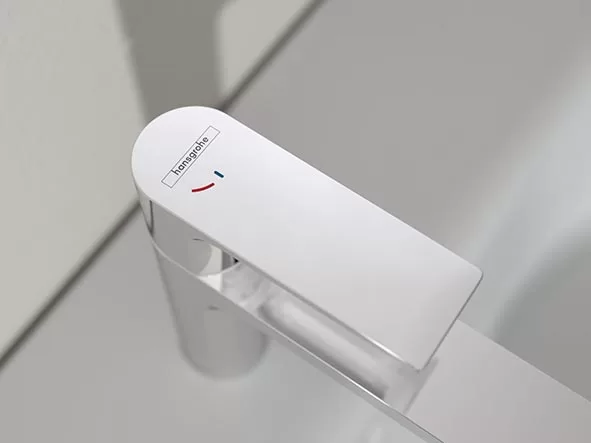
Besides mindful behaviour, modern bathroom products are another way to reduce water consumption, without having to go to great effort or sacrifice comfort and convenience. Water-saving elements are now standard features of most modern fittings. Aerators – also known as flow restrictors – are the most familiar example. They’re inexpensive, easy to install and reduce the amount of water that passes through the tap by mixing it with air. Even much older taps can be retrofitted with a flow restrictor. Today’s side jets, waterfall and overhead showers also come with optimised, water-saving spray patterns. The popular overhead showers can even use an optimised spray pattern to simulate luxurious monsoon rain; as a result, not even those who regularly indulge in a hedonistic shower experience need to feel too guilty.
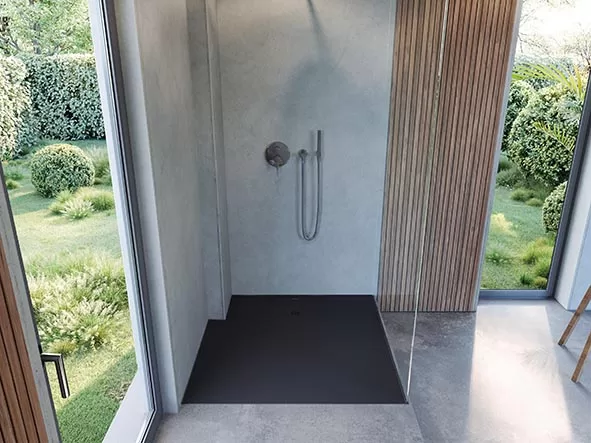
Water-saving cartridges for conventional single-lever mixer taps also help to save water by causing resistance when the lever is operated and thus reducing the likelihood of the tap running at full flow unintentionally. In the public sector, and increasingly also in private settings, touchless fittings are being used to save water as well. It’s even possible to conserve resources when taking a bath, because tubs with an optimised inner shape considerably reduce the amount of water required to achieve the sought-after wellness effect.
Single-lever mixers for the washbasin and shower are a particularly effective way of saving water because they allow the flow to be turned on and off more quickly. What’s more, they have a built-in energy-saving effect because they allow the desired temperature to be set more quickly than separate hot and cold taps. And last but not least, touchless fittings are helping to promote a more conscious approach to water and energy in a growing number of private bathrooms: sensors control the water flow electronically and switch it on and off automatically; it’s often even possible to preset the temperature as well. Consequently, the water only flows when it’s really needed.
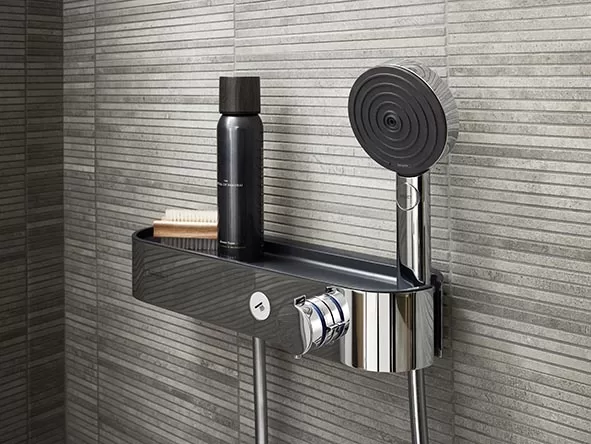
The thermostatic mixers available for the bathtub or shower allow the maximum and average water temperature to be set and maintain the temperature constantly thanks to a sensor. Besides preventing the risk of scalding, they also minimise the amount of time during which the water runs unnecessarily until it reaches the desired temperature.
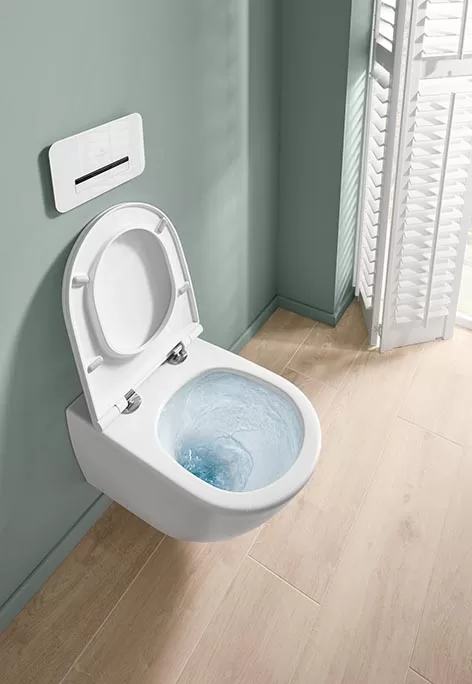
Today’s cisterns are equipped with dual flush technology which saves up to 50% of the water used by conventional systems. At the same time, the technology advances manufacturers are making with regard to flushing the actual toilet bowl more effectively aren’t just further reducing water consumption in the bathroom, they’re making the toilet more hygienic and easier to clean as well. Rimless toilets in particular significantly reduce the amount of cleaning effort required because the absence of a rim means every part of the surface is easily accessible.
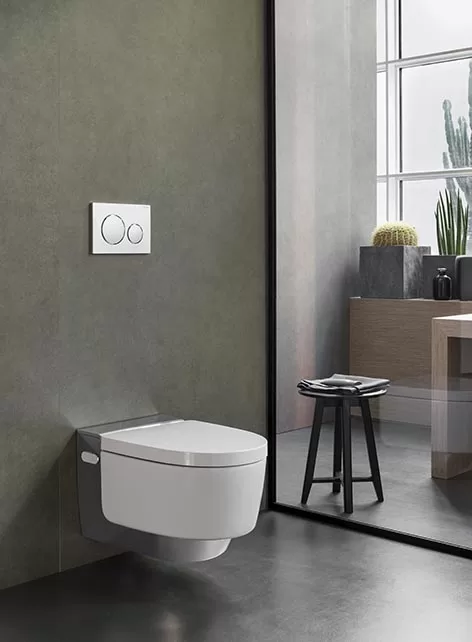
The shower toilet is also a good choice for a Sustainable Bathroom and is particularly suitable for anybody who occasionally uses moist toilet paper in search of enhanced hygiene and comfort. Most toilet paper is made of synthetic fibres like polymers or polyester, which means it doesn’t dissolve in water and has a lasting impact on the environment. Besides eliminating the need for moist toilet paper, a shower toilet also reduces toilet paper consumption in general. In addition, the water-based cleaning it provides is also far more gentle on the skin.
Ultimately, the Sustainable Bathroom is a forward-looking concept that strives for the optimal combination of smart products for saving water and energy, eco-friendly industrial production, sustainable materials, future-oriented bathroom planning and enduring design.
For more information visit ish.messefrankfurt.com/frankfurt/en.html



































